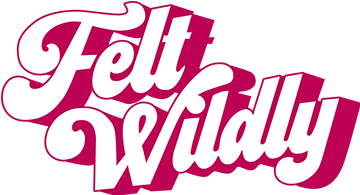Beginners' Guide
It can be a daunting task trying to understand the terminology used in needle felting! Our handy beginner’s guide has you covered with useful, easy-to-understand sections on everything needle felting.
What the fluff? Wool Guide
Who knew there were so many types of wool. Sadly, it’s all too easy to buy the wrong type! So hold tight folks, as we break down wool for you and provide a little clarity.
Wool Terminology
Carded: The word ‘carded’, in relation to any of the wools we sell, means the wool has been brushed so the fibres lay in different directions, making it much easier to needle felt. Using wool that has been carded will speed along the felting process, especially when sculpting a 3D object.
Batts: Carded wool that comes off the carder in a thick sheet or pad. It makes it easy to separate and peel into thin sheets. When using batts to start a core body you pull off strips and roll them tightly, then needle felt to hold together.
Silvers: Carded wool that has been formed into a long, thin, tubular, rope-like piece and comes in a roll. Is is particularly good for knotting and then wrapping round the knot to start off your core body.
5 Types of Wool
We sell five types of felting wool, all tried and tested by ourselves and our students in our beginner’s workshops.
The right prick! Needle Guide
Needle Gauge Rule: “The smaller the number the larger the needle”
Needle felting needles are often labelled as a number followed by a G, e.g. 38G. The G stands for gauge, which means thickness. Unlike microns (that tell us the thickness of our woolly fibres), the gauge numbers work inversely. The smaller the gauge number, the larger the needle!
Our Beginner’s Needle Recommendations
What's in your toolkit? Tool Guide
Which kit is your right fit? Kits Guide
Words you need to know! Needle Felting Dictionary
We’ve compiled a guide of all the terms you need to know about needle felting as a handy reference if you come across an unfamiliar term. Click the link below to have a look!




























